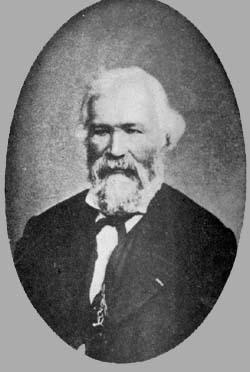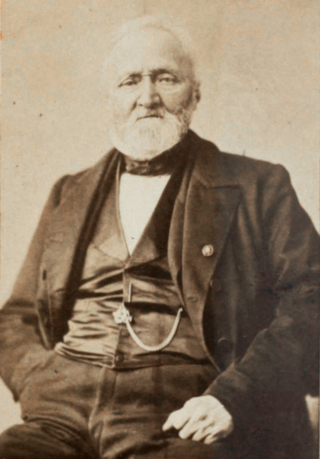
Lobaria is a genus of foliose lichens, formerly classified in the family Lobariaceae, but now placed in the Peltigeraceae. They are commonly known as "lung wort" or "lungmoss" as their physical shape somewhat resembles a lung, and their ecological niche is similar to that of moss.
Scutula is a genus of lichenicolous fungi in the family Ramalinaceae.

Louis René Étienne Tulasne, a.k.a. Edmond Tulasne was a French botanist and mycologist born in Azay-le-Rideau.

Jean Pierre François Camille Montagne was a French military physician and botanist who specialized in the fields of bryology and mycology.

Abrothallus is a genus of lichenicolous (lichen-dwelling) fungi. It is the only genus in the monotypic family Abrothallaceae, which itself is the sole taxon in the order Abrothallales.

Chrysothrix is a genus of lichen-forming fungi in the family Chrysotrichaceae. They are commonly called gold dust lichens or sulfur dust lichens, because they are bright yellow to greenish-yellow, sometimes flecked with orange, and composed entirely of powdery soredia. Apothecia are never present in North American specimens.

Siphula is a genus of lichen-forming fungi in the family Icmadophilaceae. The widespread genus was circumscribed by the Swedish mycologist Elias Fries in 1831.

Leprocaulaceae is a family of mostly lichen-forming fungi. It is the single family in the monotypic order Leprocaulales. Leprocaulaceae contains three genera and about 33 species.

Phacopsis vulpina is a species of lichenicolous (lichen-dwelling) fungus in the family Parmeliaceae, and the type species of the genus Phacopsis. It was formally described as a new species in 1852 by French mycologist Edmond Tulasne. The fungus is restricted to the genus Letharia as a host and consequently has a Northern Hemisphere distribution. Externally, it is somewhat similar in appearance to P. lethariellae, but P. vulpina does not have a brown hypothecium.
Abrothallus boomii is a species of lichenicolous fungus in the family Abrothallaceae. Found in Portugal, it was formally described as a new species in 2015 by Ave Suija and Sergio Pérez-Ortega. The type specimen was collected north of Ervas Tenras in a pine-oak forest along a vineyard, where it was found growing on the thallus of a Nephroma lichen. It is only known to occur at the type locality. The species epithet honours Dutch lichenologist Pieter van den Boom, "author of a long list of research articles and indefatigable collector of lichens and lichenicolous fungi".
Abrothallus canariensis is a species of lichenicolous fungus in the family Abrothallaceae. Found in the Canary Islands, it was formally described as a new species in 2015 by Sergio Pérez-Ortega, Pieter van den Boom, and Ave Suija. The type specimen was collected from Chinobre, where it was found on a Pseudocyphellaria aurata lichen that itself was growing on a species of Erica. The species epithet refers to the area of its type locality. The fungus is similar to Abrothallus secedens, but unlike that species, has four-spored asci, and larger ascospores that measure 16–25 by 6–9.5 μm.
Abrothallus doliiformis is a species of lichenicolous fungus in the family Abrothallaceae. Found in Peru, it was formally described as a new species in 2015 by Ave Suija and Sergio Pérez-Ortega. The type specimen was collected from Machu Picchu at an elevation of 2,484 m (8,150 ft), where it was growing on the thallus of an unidentified Sticta lichen. It is only known to occur at the type locality. The species epithet doliiformis refers to its doliiform (barrel-shaped) pycnidia. This feature, along with its hyaline, single-celled conidia distinguish it from other Abrothallus fungi.
Abrothallus eriodermae is a species of lichenicolous fungus in the family Abrothallaceae. Found in Alaska, South America, Jamaica, and Réunion island, it was formally described as a new species in 2015 by Ave Suija, Javier Etayo, and Sergio Pérez-Ortega. The type specimen was collected from the Bébour forest in La Reunion, growing on Erioderma papyraceum. It has also been recorded on Erioderma chilense, E. sorediatum, and E. wrightii. The species epithet refers to the host genus Erioderma.
Abrothallus ertzii is a species of lichenicolous fungus in the family Abrothallaceae. Found in Canada, it was formally described as a new species in 2015 by Ave Suija and Sergio Pérez-Ortega. The type specimen was collected near Dawson Falls in Wells Gray Provincial Park, where it was found growing on the thallus of the foliose lichen Lobaria pulmonaria, which itself was growing on the trunk of a Thuja plicata tree. It has also been collected in Quebec. The species epithet honours Damien Ertz, who collected the type. Abrothallus ertzii is distinguished from other Abrothallus fungi by its clavate (club-shaped) asci that contain eight two-celled ascospores; these readily split into part spores.
Abrothallus etayoi is a species of lichenicolous fungus in the family Abrothallaceae. Found in Mexico, it was formally described as a new species in 2015 by Ave Suija and Sergio Pérez-Ortega. The type specimen was collected from Angahuan (Michoacán) at an elevation of 2,470 m (8,100 ft); there, in a pine-oak forest, it was found growing on a Sticta lichen that itself was growing on oak. The species epithet honours Spanish lichenologist Javier Etayo, "a keen collector of lichenicolous fungi and lichens".
Abrothallus nephromatis is a widely distributed species of lichenicolous fungus in the family Abrothallaceae. It was formally described as a new species in 2015 by Ave Suija and Sergio Pérez-Ortega. The type specimen was collected near Dawson Falls in Wells Gray Provincial Park at an elevation of about 800 m (2,600 ft), where it was found on a Nephroma parile lichen that itself was growing on a dead trunk of birch tree. The species epithet refers to the host genus, Nephroma.
Abrothallus granulatae is a species of lichenicolous fungus in the family Abrothallaceae. Found in South America, it was formally described as a new species in 1994 by Swedish lichenologist Mats Wedin. The type specimen was collected by the author on the eastern shore of Lago Roca in Tierra del Fuego National Park, where it was found on the thallus of the foliose lichen Pseudocyphellaria granulata, which itself was growing on the base of a dead Nothofagus tree. The species epithet of the fungus refers to the epithet of its host lichen. The anamorph form of the fungus was concurrently named Vouauxiomyces granulatae. Characteristics of the fungus include the dense clusters formed by its apothecia, and its 2-septate ascospores. Abrothallus granulatae has also been collected in Chile.
Abrothallus secedens is a species of lichenicolous fungus in the family Abrothallaceae. Found in Africa, South America, and the United States, it was formally described as a new species in 1994 by Swedish lichenologists Mats Wedin and Rolf Santesson. The type specimen was collected by the first author on the Martial Glacier in Ushuaia at an altitude of 550 m (1,800 ft), where it was found on the thallus of the foliose lichen Pseudocyphellaria dubia, which itself was growing on the base of a Nothofagus antarctica tree. It has also been collected in Chile, Kenya, and Alaska. The species epithet of the fungus, secedens refers to the two-celled ascospores that eventually separate into single-celled part spores. Known hosts for Abrothallus secedens include Crocodia aurata, Pseudocyphellaria dubia, P. mallota, P. obvoluta, and other Pseudocyphellaria lichens not identified to species.
Abrothallus halei is a species of lichenicolous fungus in the family Abrothallaceae. It was formally described as a new species in 2010 by lichenologists Sergio Pérez-Ortega, Ave Suija, David Leslie Hawksworth, and Rolf Santesson. The type specimen was collected by Cliff Wetmore east of Hare Lake at an elevation of 550 m (1,800 ft); there it was found on the foliose lichen Lobaria quercizans, which itself was growing on the bark of Acer saccharum. The fungus has also been collected in West Virginia, Maine, as well as in Norway. The species epithet honours American lichenologist Mason Hale.








